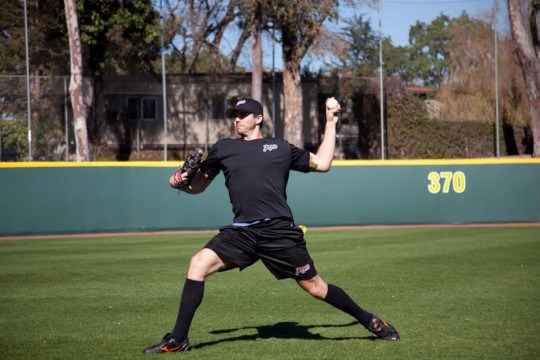
In addition to preparing their pitchers for Opening Day, one of the biggest challenges that coaches face has gone largely unnoticed: establishing a way for relief pitchers to stay loose during a game so that they optimize their in-game performance. Without addressing this issue, relievers would often go 4+ hours between throws on a regular basis. Bridging these long gaps of inactivity between pregame and in-game action is key for pitchers to be able to enter a game thoroughly warm, stretched out and loose.
Alan Jaeger, who has worked with more than 200 professional players over the past 25+ years, is here to help. Jaeger’s Year Round Throwing Manual was released a couple of years ago and addressed this issue head-on. Inside Pitch caught up with the founder of Jaeger Sports to dig deeper into ways to keep relief pitchers as fresh as possible throughout the season.
Inside Pitch: When did you notice the lack of activity both before and during the game that occurs amongst relief pitchers in baseball?
Alan Jaeger: Over many years of watching pitchers get loose before competition, it seems like it's commonplace for them to stay within 90-120 feet, as if they are "saving their arm" for the game. But if the arm is used to stretch out (250-300 feet) prior to aggressive throwing on a typical long toss day, why wouldn't you at least completely stretch your arm out (without pulling down) to its acclimated distance on a game day? We call this “opening the door,” which not only sets the tone for opening up the arm, but positions the arm to stay incubated throughout the game.
IP: What do you mean by ‘incubation period’?
AJ: Once the arm has been opened up to its typical long toss distance before a game, the idea is to keep it warm, or incubated, throughout the game through periodic activity, such as stretching, arm circles, band work, etc. Keeping the arm warm can provide a smoother and safer transition to the initial throws prior to getting on the mound, without shocking it after four hours of little or no activity.
IP: How does a routine like this positively impact the arm?
AJ: Arm health will be helped because the arm is not ‘shocked’ into action after little/no activity from pregame throwing to in-game performance. The arm can be optimally stretched out, and kept stretched out for hours. With a routine like this, the arm can also enter into aggressive throwing from an optimal place regarding flexibility/stretching, heat and range of motion. The freedom/ looseness of the arm lends to a more effortless delivery, greater velocity and better life on the ball. And because the arm has been kept so warm and the athlete didn't feel a need to get to max effort in a hurry, the arm will be in a much better position to recover faster.
IP: What exactly would this routine look like?
AJ: It could be as simple as two minutes of light stretching (including the body) and band work every 30 minutes, starting from the last throw made during pre-game to the ramp up period prior to getting up in the pen:
- 30 Seconds of Arm Circles (forward and backward)
- Bands:
3-5 reps of Internal Rotation (hip height)
3-5 reps of External Rotation (hip height)
3-5 reps of Internal Rotation (shoulder height)
3-5 reps of External Rotation (shoulder height)
3-5 reps of Reverse Throws
3-5 reps of Forward Throws
... and for the "ramp up" period, just repeat above but increase Forward Throws from 5 to 20 reps.
For more information, visit
jaegersports.com or check out Jaeger’s Year Round Throwing Manual